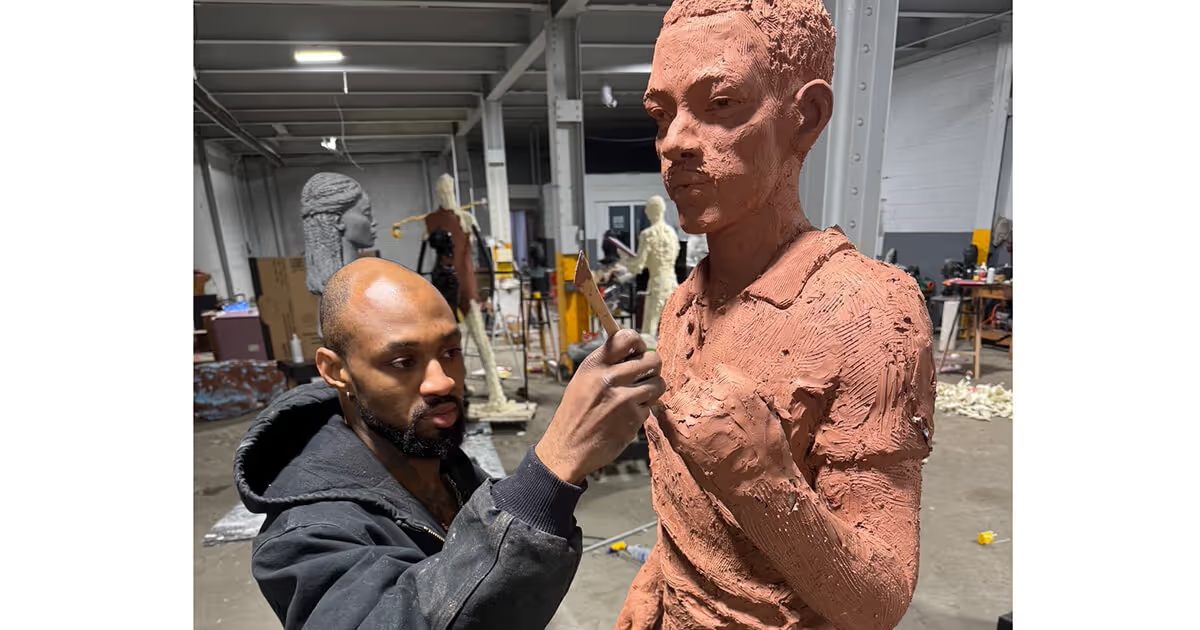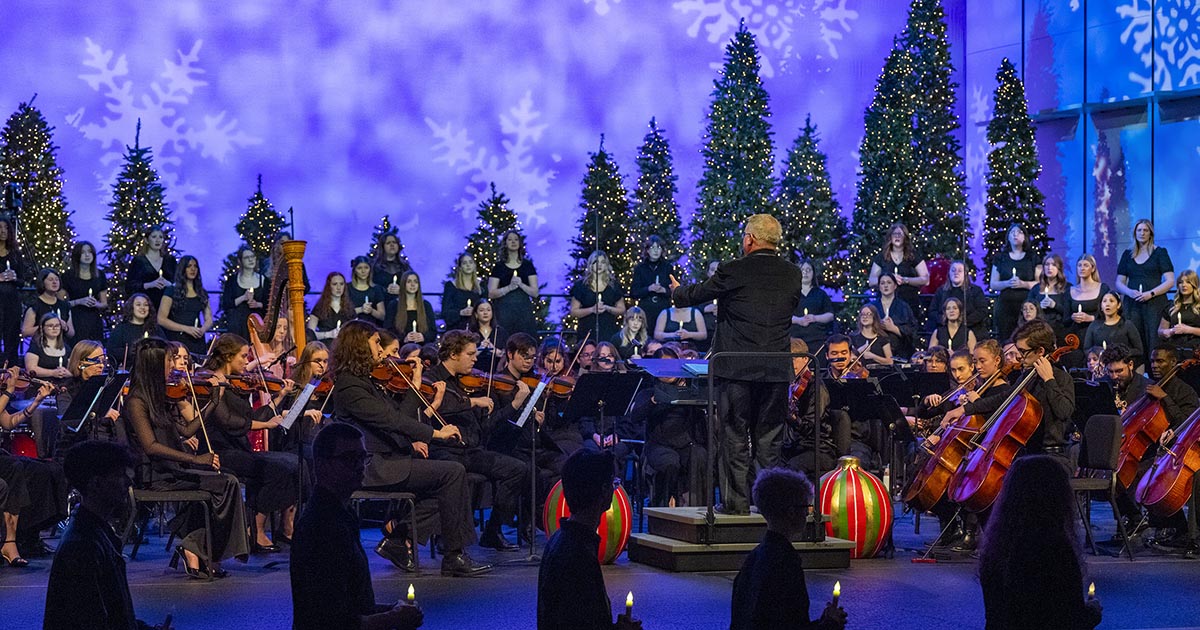When an arctic blast swept through Johnson City in December 2022, it brought freezing temperatures that nearly destroyed a significant campus landmark at East Tennessee State University.
ETSU’s iconic fountain, a tribute to the five African American students who integrated the university, froze solid and cracked under the weight of the ice.
But from that moment of loss came an unexpected gift – one that the university will unveil on Saturday, Oct. 25, at 10 a.m. during its annual Homecoming festivities. The public is invited to attend this free event, and there will be a meet and greet with the honorees after the ceremony.
University leaders thought that the fountain would have to be completely replaced, so they put out a national call to artists to submit a new design to replace the damaged monument. A committee of community leaders, students, faculty and staff reviewed the five finalists and selected a final design – a sculpture by Detroit artist Austen Brantley.
The sculpture consists of five, life-size bronze statues of the five students who integrated ETSU in the late 1950s: Eugene Caruthers, Elizabeth W. Crawford, George L. Nichols, Mary L.W. Wagner and Clarence McKinney.
Carving Out an Idea
Dr. Keith Johnson, ETSU vice president for Student Success, chaired the memorial committee, along with co-chair Travis Graves, ETSU professor of sculpture.
“Once we saw the design and learned that the fountain could be restored, we decided to pivot and select a new location for this new memorial,” Johnson said. “We kept the location close to the fountain, nearby in Borchuck Plaza, in front of Sherrod Library. Now, as people walk by, there is a beautiful new tribute to the five students who changed the course of history at ETSU.”
Three of those five students, Crawford, Nichols and Wagner, plan to be in attendance on Saturday, Oct. 25, at 10 a.m., when campus and community members will gather for its unveiling. Clarence McKinney’s son, Robert, will also attend.
The artist, Austen Brantley, will also be present.
Brantley used photographs and stories about the students to develop the concept and craft the sculptures. AI technology helped him improve the quality of the images to provide a clearer picture of what the students looked like while they attended ETSU. Using clay molds, he cast the sculptures in bronze. The finished sculpture weighs between two and three tons.
Brantley is also working with a stonemason to incorporate large rocks into the sculpture’s base design. The landscaping and lighting are also part of the overall design he envisioned for the installation.
“These students had a journey together, and you will see this in how they are placed,” Brantley said. “They are banded together in art, just as they are in history, because of what they went through.”
A Place in History
George Nichols, one of the five students represented in the piece, served on the committee to select and plan for the art installation.
“This statue stands as a powerful reminder of five courageous men and women who, in the face of uncertainty, broke barriers to desegregate ETSU and reshape its history,” Nichols said. “Their strength and resolve opened doors for countless others and marked a turning point in the pursuit of equality and justice. As we honor this legacy, may this courage continue to inspire future generations to stand firm in their convictions, pursue their aspirations without fear, and build a more inclusive and compassionate future for all.”
After they celebrate the unveiling of the sculptures on Oct. 25, Nichols and his classmates will be recognized on the field at the ETSU football game later that day.
“The impact of these students on ETSU more than 65 years later is profound, and I can think of no better time to honor them than during our annual Homecoming celebration,” said ETSU President Dr. Brian Noland. “The new monument is a testament to their bravery and their belief in the transformative power of education. They are trailblazers who helped chart a better future not only for our university but for our entire region.”



.png)
.jpeg)
